Jeep Compass vs Mitsubishi ASX – Differences & prices compared
Compare performance, boot space, consumption and price in one view.
Find out now: which car is the better choice for you – Jeep Compass or Mitsubishi ASX?
The Jeep Compass (SUV) comes with a Petrol MHEV, Plugin Hybrid or Electric engine and Automatic transmission. In comparison, the Mitsubishi ASX (SUV) features a Petrol, Petrol MHEV or Full Hybrid engine with Manuel or Automatic transmission.
When it comes to boot capacity, the Jeep Compass offers 550 L, while the Mitsubishi ASX provides 484 L – depending on how much space you need. If you’re looking for more power, decide whether the 240 HP of the Jeep Compass or the 158 HP of the Mitsubishi ASX suits your needs better.
In terms of consumption, the values are 17.50 kWh2 L per 100 km for the Jeep Compass, and 4.40 L for the Mitsubishi ASX.
Price-wise, the Jeep Compass starts at 34200 £, while the Mitsubishi ASX is available from 20600 £. Compare all the details and find out which model fits your lifestyle best!
In the world of compact SUVs, the Jeep Compass and the Mitsubishi ASX stand out with their distinct characteristics. The Jeep Compass offers rugged charm with its superior off-road capabilities and classic design, appealing to adventure enthusiasts. On the other hand, the Mitsubishi ASX shines with its practicality and value for money, providing a smoother ride and more efficient fuel consumption ideal for urban commuters.
Jeep Compass
The Jeep Compass combines a rugged aesthetic with modern sophistication, making it a standout choice in the compact SUV segment. Its robust design is complemented by a comfortable interior that offers ample space and cutting-edge technology for a seamless driving experience. Whether tackling urban environments or venturing off-road, the Compass provides versatility and reliability, embodying the adventurous spirit synonymous with the Jeep brand.
details @ media.stellantis.com
@ media.stellantis.com
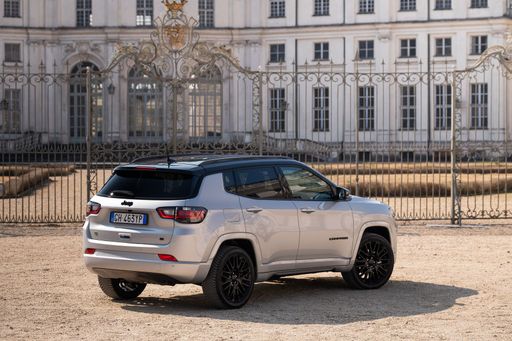 @ media.stellantis.com
@ media.stellantis.com
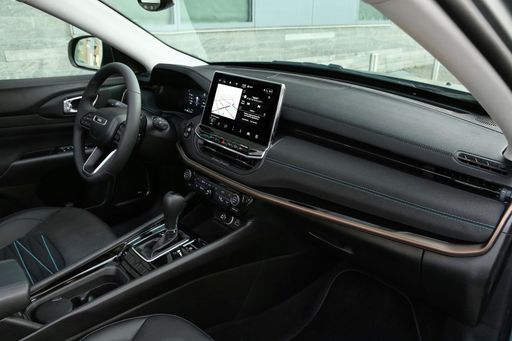 @ media.stellantis.com
@ media.stellantis.com
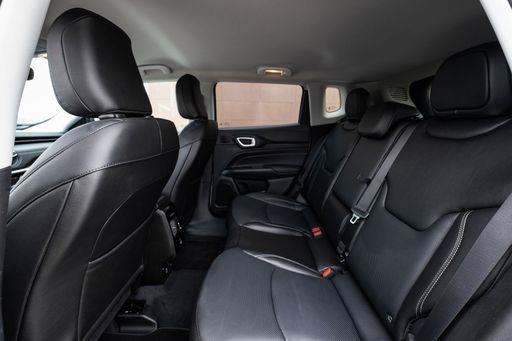 @ media.stellantis.com
@ media.stellantis.com
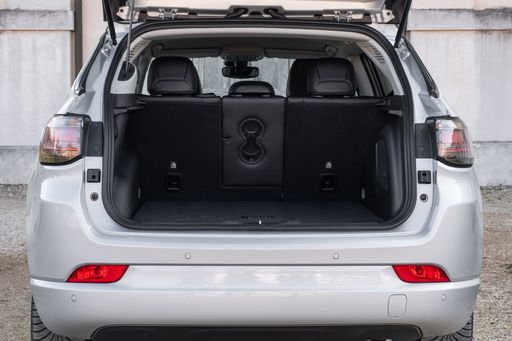 @ media.stellantis.com
@ media.stellantis.com
Mitsubishi ASX
The Mitsubishi ASX presents itself as a compact crossover that combines practicality with style. Its sleek design and versatile interior make it an appealing choice for both urban and rural settings. With a focus on providing a comfortable driving experience, the ASX also offers a range of modern features that enhance connectivity and safety.
details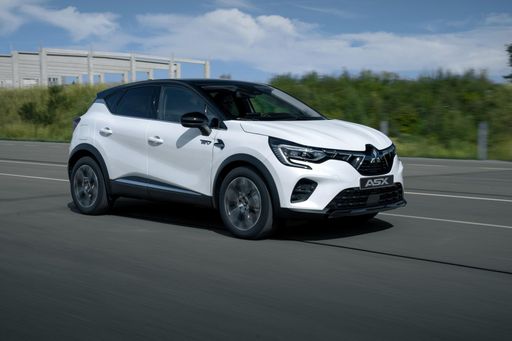 @ Mitsubishi
@ Mitsubishi
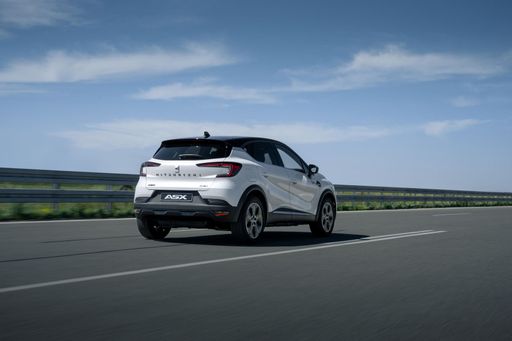 @ Mitsubishi
@ Mitsubishi
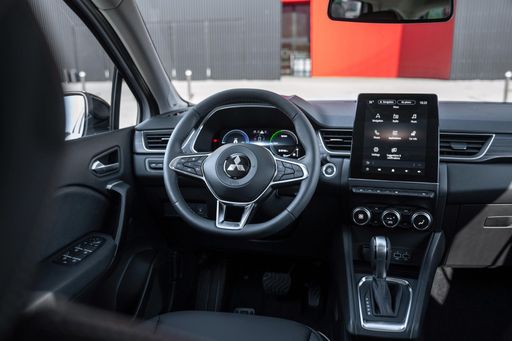 @ Mitsubishi
@ Mitsubishi
 @ Mitsubishi
@ Mitsubishi
Jeep Compass vs. Mitsubishi ASX: Which SUV is Right for You?
In a world where SUVs reign supreme, the Jeep Compass and the Mitsubishi ASX continue to carve out a niche by offering modern tech, solid performance, and versatility. With new 2024 models on the horizon, prospective buyers are presented with two compelling options. Let's dive into the comparisons based on technical specifications and innovations.
Design and Dimensions: A Clash of Styles
The Jeep Compass boasts robust dimensions, stretching 4404 mm in length, 1819 mm in width, and standing tall between 1629 and 1649 mm. Its commanding presence is marked with modern aesthetics that are sure to turn heads. In comparison, the Mitsubishi ASX is slightly more compact, measuring 4239 mm in length and 1797 mm in width, with a height of 1575 mm. While it may appear smaller, the ASX offers a design that is both sleek and functional, making it ideal for urban and suburban commutes.
Engines and Performance: Power vs. Efficiency
Under the hood, the Jeep Compass delivers a diverse range of powertrains. Options include Petrol MHEV and Plugin Hybrid engines, producing power outputs ranging from 130 to 240 HP with acceleration spans from 10.3 to an impressive 7.3 seconds to reach 100km/h. This is paired with a choice between a dual-clutch automatic or traditional automatic gearbox, complemented by the versatility of front-wheel or all-wheel drive configurations.
In contrast, the Mitsubishi ASX offers engines in petrol, mild hybrid, and full hybrid variants, with power outputs ranging between 91 and 158 HP. The ASX reaches 100km/h in times varying from 14 to a brisk 8.5 seconds. While its engine lineup might seem less powerful, the focus on efficiency with a top consumption rate of 4.7 L/100km and a battery capacity of 0.6 kWh offers an environmentally conscious driving experience.
Innovations and Features: Tech-Savvy or Traditional Comfort?
Both the Compass and the ASX sport abundant technological features. The Compass stands out with its potential for an all-wheel drive system, coupled with innovative hybrid technologies that extend its electric range to 36 km, emphasizing eco-friendly prowess without sacrificing too much on the power front.
The ASX, on the other hand, embraces simplicity with a breadth of functional technology that complements its petrol and hybrid engines. While it lacks the advanced hybrid range of the Compass, it compensates with a reputation for being a robust, dependable family car tailored for practical journeys.
Practicality: Inside the Cabin
Both SUVs offer a 5-seat configuration, but storage capacity offers a point of divergence. The Jeep Compass provides between 420 to 438 liters of trunk space, catering to those who balance work and adventure. Mitsubishi counters with its ASX, offering a trunk capacity of 348 to 484 liters, slightly extending the possibilities for daily use and longer road trips.
The Compass leans towards a slightly higher curb weight, ranging from 1575 to a robust 1935 kg, impacting its handling characteristics, especially when the vehicle is fully loaded. The ASX, lighter in comparison, ranges from 1296 to 1501 kg, providing a more agile handling experience.
Conclusion: The Choice is Yours
Choosing between the Jeep Compass and Mitsubishi ASX boils down to personal preferences and priorities. If you favor power, off-road capabilities, and a sprinkle of electrified innovation, the Compass takes the lead. Meanwhile, if you're seeking a practical, efficient, and traditionally reliable SUV, the ASX presents an enticing option.
Ultimately, both offer unique strengths that cater to diverse lifestyles and needs, ensuring that no matter your choice, you're in for a ride that's sure to satisfy.

|

|
|
|
|
Costs and Consumption |
|
|---|---|
|
Price
34200 - 46900 £
|
Price
20600 - 32500 £
|
|
Consumption L/100km
2 - 5.9 L
|
Consumption L/100km
4.4 - 6 L
|
|
Consumption kWh/100km
17.50 kWh
|
Consumption kWh/100km
-
|
|
Electric Range
36 - 500 km
|
Electric Range
-
|
|
Battery Capacity
74 kWh
|
Battery Capacity
-
|
|
co2
0 - 133 g/km
|
co2
99 - 135 g/km
|
|
Fuel tank capacity
36 - 55 L
|
Fuel tank capacity
48 L
|
Dimensions and Body |
|
|---|---|
|
Body Type
SUV
|
Body Type
SUV
|
|
Seats
5
|
Seats
5
|
|
Doors
5
|
Doors
5
|
|
Curb weight
1575 - 2198 kg
|
Curb weight
1296 - 1493 kg
|
|
Trunk capacity
420 - 550 L
|
Trunk capacity
348 - 484 L
|
|
Length
4404 - 4552 mm
|
Length
4239 mm
|
|
Width
1819 mm
|
Width
1797 mm
|
|
Height
1629 - 1675 mm
|
Height
1575 mm
|
|
Payload
465 - 470 kg
|
Payload
397 - 449 kg
|
Engine and Performance |
|
|---|---|
|
Engine Type
Petrol MHEV, Plugin Hybrid, Electric
|
Engine Type
Petrol, Petrol MHEV, Full Hybrid
|
|
Transmission
Automatic
|
Transmission
Manuel, Automatic
|
|
Transmission Detail
Dual-Clutch Automatic, Automatic Gearbox, Reduction Gearbox
|
Transmission Detail
Manual Gearbox, Dual-Clutch Automatic, Automatic Gearbox
|
|
Drive Type
Front-Wheel Drive, All-Wheel Drive
|
Drive Type
Front-Wheel Drive
|
|
Power HP
130 - 240 HP
|
Power HP
91 - 158 HP
|
|
Acceleration 0-100km/h
7.3 - 10.3 s
|
Acceleration 0-100km/h
8.5 - 14 s
|
|
Max Speed
180 - 200 km/h
|
Max Speed
168 - 180 km/h
|
|
Torque
230 - 345 Nm
|
Torque
160 - 270 Nm
|
|
Number of Cylinders
4
|
Number of Cylinders
3 - 4
|
|
Power kW
96 - 177 kW
|
Power kW
67 - 116 kW
|
|
Engine capacity
1199 - 1469 cm3
|
Engine capacity
999 - 1789 cm3
|
General |
|
|---|---|
|
Model Year
2024 - 2025
|
Model Year
2024 - 2025
|
|
CO2 Efficiency Class
D, B, A
|
CO2 Efficiency Class
D, C
|
|
Brand
Jeep
|
Brand
Mitsubishi
|
Jeep Compass
Exploring the Jeep Compass: A Modern SUV with Innovative Features
The Jeep Compass continues to challenge the boundaries of what an SUV can be, offering a blend of practicality, efficiency, and rugged appeal. This model, distinguished by its diverse range of powertrains, promises to cater to various needs and preferences. From urban commuting to exploring off-road trails, the Compass delivers with aplomb.
Engine Versatility and Performance
Under the bonnet, the Jeep Compass offers a diverse lineup of engines designed to meet varying driver demands. With options ranging from mild hybrid petrol engines to advanced Plug-in Hybrid Electric Vehicles (PHEVs), the Compass provides both efficiency and power. This impressive engine choice results in power outputs from 130 to 240 PS, ensuring that there is a model suitable for both city driving and more ambitious off-road excursions.
Performance devotees will appreciate the Compass's quick acceleration, clocking 0-100 km/h in as little as 7.3 seconds. Meanwhile, fuel economy remains commendable, with consumption figures between 1.7 to 5.5 litres per 100 kilometres, making the Compass an economical choice for daily driving.
Innovative Hybrid Technology
The Jeep Compass brings cutting-edge hybrid technology to the forefront. The available plug-in hybrid variants offer electric-only driving ranges of up to 53 kilometres, ideal for environmentally conscious urban drivers. This zero-emission capability makes short trips sustainable without compromising on the flexibility offered by the internal combustion engine for longer journeys.
Dynamic Drivetrain Options
One of the main talking points of the Compass is its adaptable drivetrain options, which include both front-wheel drive and all-wheel drive systems. The 4xe PHEV models particularly stand out with their all-wheel drive, providing enhanced stability and traction suitable for varying terrains. Additionally, the automated transmission ensures smooth gear changes and an overall comfortable driving experience.
Design and Comfort
Beyond performance, the Jeep Compass excels in providing a stylish and functional environment. The SUV's dimensions, ranging between 4398 to 4404 mm in length and up to 1874 mm in width, offer ample interior space for both passengers and cargo. The boot space varies from 420 to 438 litres, accommodating the needs of families and adventure-seekers alike.
With seating for five, maximum comfort is assured, thanks to high-quality materials and thoughtfully designed interiors. The Compass integrates advanced technology seamlessly into its cabin, ensuring easy connectivity and an engaging driving experience.
Safety and Efficiency
Safety is paramount in the Jeep Compass, with a range of driver assistance features providing peace of mind. The model adheres to impressive CO2 efficiency standards, boasting a CO2 emission range between 37 and 123 g/km, making it both a responsible and reliable choice.
Furthermore, the Compass offers competitive running costs, with monthly expenses ranging from €1,095 to €1,315, and an average cost per kilometre between 43.8 and 52.6 cents. This cost-effectiveness further underscores the Compass’s value proposition.
Conclusion
Overall, the Jeep Compass stands out as a richly equipped, versatile SUV, ready to tackle urban or off-road challenges. With its blend of powertrain innovations, superior performance, and sophisticated design, it redefines what’s possible in the SUV segment. Whether for efficient city driving or adventurous journeys into the unknown, the Compass is ready to rise to the occasion.
Mitsubishi ASX
The Mitsubishi ASX: A Modern SUV with Advanced Features
The Mitsubishi ASX continues to be a popular choice for SUV enthusiasts, combining sleek design, impressive efficiency, and innovative technology. The 2024 model year introduces an array of improvements, making it a worthy contender in its category. In this article, we will delve into the technical details and innovative aspects of the Mitsubishi ASX, presenting why it stands out in the SUV segment.
Sophisticated Powertrains and Efficiency
Under the bonnet, the Mitsubishi ASX offers a variety of powertrain options, catering to different driving preferences. Customers can choose from petrol engines, mild-hybrid systems, and full-hybrid configurations, balancing power and efficiency effectively.
The performance spectrum ranges from 91 PS to 158 PS, demonstrating the vehicle's versatility. With a fuel consumption of between 4.7 and 6 L/100km, the ASX effectively manages fuel efficiency without compromising on performance. The car's CO2 emissions range from 107 to 135 g/km, placing it within CO2 efficiency classes C and D.
Advanced Transmission Options
The ASX offers a mixture of manual and automatic transmissions to meet diverse driving needs. Its gearbox specifications include a standard manual option and automatic options such as dual-clutch transmissions, providing a seamless driving experience. Depending on the variant, the vehicle can accelerate from 0 to 100 km/h in as little as 8.5 seconds, reaching maximum speeds between 168 and 180 km/h.
Modern Design and Spacious Interior
Externally, the ASX reflects contemporary design aesthetics, with dimensions of 4239 mm in length, 1797 mm in width, and 1575 mm in height. Internally, it accommodates up to five passengers comfortably and offers a respectable boot capacity ranging from 348 to 484 litres. Despite its spaciousness, the SUV maintains an optimal weight between 1296 and 1501 kg, which aids in delivering its intended driving dynamics.
Safety and Technology Innovations
Mitsubishi prioritises safety and technology in the ASX. It is equipped with the latest driver-assistance systems, enhancing safety and convenience. The modern infotainment system integrates smoothly with smartphones, ensuring that connectivity is at the driver's fingertips. Moreover, various trimming levels such as "Intro Edition DCT" and "Top Automatik" allow customers to select features best suited to their lifestyle, from basic utilities to luxury enhancements.
Conclusion: A Balanced SUV Choice
The Mitsubishi ASX stands out as a well-rounded SUV choice for those who prioritise efficiency, reliability, and modern technology. Its array of powertrains, stylish design, and advanced safety features make it an attractive option within its price range of €23,990 to €37,390. The ASX's 2024 model reaffirms Mitsubishi’s commitment to offering innovative yet practical vehicles to the global market.
Which drive types are available for the Jeep Compass?
Available as Front-Wheel Drive or All-Wheel Drive.
The prices and data displayed are estimates based on German list prices and may vary by country. This information is not legally binding.
